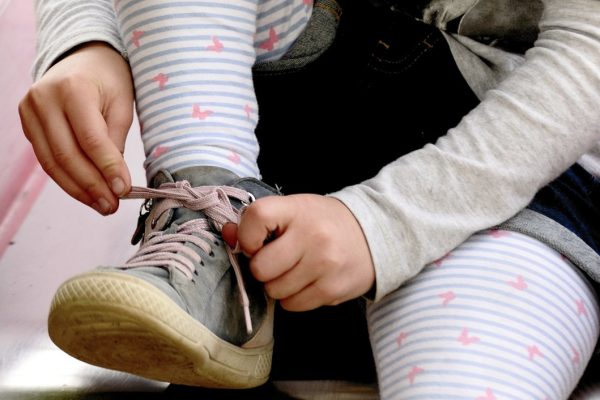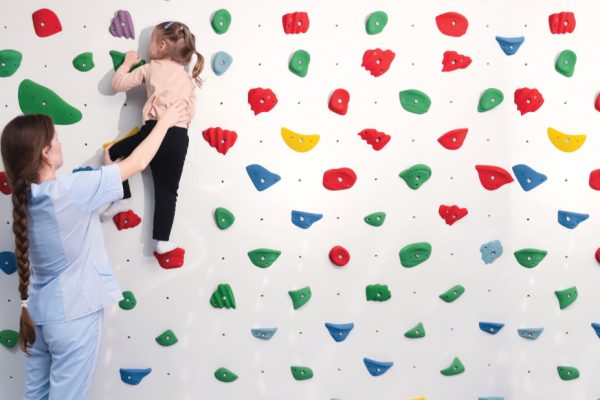
School transitions: how to prepare your child
There are many different transitions involved with schooling, such as beginning primary or high school, changing schools or just returning to school after the summer holidays with a new class and new teachers on the horizon. Even daily school life involves numerous transitions, which all children need support to manage. For children with additional needs who need the familiarity of structure and routine school transitions can be a time of stress and worry.
There are many ways that families can help their child to better manage these events. The following are a selection of general strategies that can be applied to any kind of school transition scenario:
Be prepared
Change and transition can lead to feelings of stress for everyone as there is an element of the unknown involved. Build confidence by talking to your child about their new school and what to expect, with this clear communication occurring well in advance.
Go one step at a time
Focus on your child’s capabilities and work to build confidence by breaking down tasks at home into simple steps. Discuss with your child’s teacher about how this might also be applied in the classroom.
Develop partnerships
Collaborate with schools and health professionals to help ensure the best outcomes for your child’s development and mental health.
Pay the school a visit
With children who have a hard time with transitions, visiting the school before the start of the academic year is critical, particularly if it is a new school.
Prepare helpful resources
A transition book, filled with photos taken on a school visit, can help your child become familiar with their new environment. You may also wish to help teachers and classmates out by sharing some information about your child. This could take the form of a presentation, a leaflet or booklet, a Q&A session or reading a story about children with similar disabilities. This can shift the focus away from your child while still providing valuable information.
Find out the new routines
As early as possible, ask the new teacher or team leader to go over the daily classroom routine so that you can review it and visualise it with your child.
Help create a positive community at your child’s school
When children feel connected and a sense of belonging they are more likely to learn and have fun. Helping your child’s school to develop a culture of belonging and inclusion is especially important for children with additional needs. This might involve sharing your child’s particular requirements with the staff or volunteering.
Preparing for back to school and transitioning to a new class
When preparing for back to school, it is important to focus only on what you can control. For instance, while you may not be able to control how a teacher relates to your child, you can help your child reduce their anxiety and stress by teaching them ways to manage their behaviour and deal with conflict. Here are some ways you can help prepare for returning to the same school in the new year.
Revisit the school environment
It’s human nature to feel more comfortable when you know your way around a particular environment. Even if your child is returning to a familiar school, the summer break can feel like a long time. Walking around and looking at visual cues can be really helpful, as can some time on the playground.
Consider your child’s individual needs
Talk about school in a casual way over the summer, including sharing stories of your own summers as a child and how you felt about returning to school. This is an opportunity to share what you did and did not like, and you could invite your child to do the same. If there are concerns that feel overwhelming, these are worth sharing with the new teachers. Using similar strategies at home and at school can strengthen your child’s skills and help set them up for success. Share with the school what works for your child at home, and ask for their feedback about what strategies are working at school.
Starting primary school
The decision about the best time for your child to start school is an individual one. It can be helpful to discuss this with people who know your child well and also understand the school system.
For children who have a developmental delay or disability, their development in certain areas may be different from other children of a similar age. Important things to consider are your child’s:
• Capacity to manage and regulate their emotions • Ability to follow instructions
• Level of independence
• Ability to manage their own belongings
• Social skills
• Support networks available
From primary school to secondary school
The sheer size of a high school building can be overwhelming, not to mention the increased number of teachers with different styles and expectations, all the different subjects on offer and the hormonal changes that accompany puberty. The demands on young people, especially those with additional needs, can be immense. Preparation is the key to a successful transition from primary to secondary school. Here are some simple ways parents can help.
Communicate
Talk with your children about the move to secondary school and find out:
- What they are worried about
- What they are looking forward to
- Anything they want their new teachers to know about them
- Ideas they have to make the transition easier
Note all the information to discuss with teachers on a school visit.
Visit the school
Visiting your child’s new secondary school is essential for a successful transition from primary school, preferably more than once. Get a full tour of the school’s facilities including toilets, lockers, the canteen, and pick up and drop off locations. Get hold of a map showing the school’s layout or make a video as you walk around. Introduce your child to non-teaching staff as well as teachers while you are there. Look at a copy of the current timetable to understand what a typical day will be like.
Help with planning and organisation
In secondary school, there is an increased expectation for students to take responsibility for planning, such as handing in homework and getting to class on time. With multiple subjects per day, there are also many materials to be managed. Our article here has some useful tips on helping children with organisational skills. Also, if your child will need support in this area make sure that it is highlighted on their transition plan.
Prepare a profile of your children for their new teachers
Make a one-page information sheet about your children to give to their new teachers, which could include the following kinds of information:
• Diagnosis and a summary of how it affects your child
• Strengths and weaknesses
• Meltdown triggers and possible strategies
• Your contact information
If possible, hand deliver the information sheet to your children’s teachers at the start of the school year and offer to help and support them in any way you can. At this time, you can discuss practical issues, and anticipate any potential problems and their solutions.
Get to know the key players
Meet with the principal, year level leaders and coordinators of learning support programs to work on a transition plan and also to put your support network in place. Find out how you can work together for the best possible outcomes for your child. Make sure you attend parent-teacher conferences to show your commitment and involvement to their education.
In all the school transitions you can expect to encounter, it is important to remember
that nobody’s perfect. Collaboration and communication, alongside gratitude and appreciation, go a long way in building successful relationships with school staff and helping your child to enjoy their time at school.







